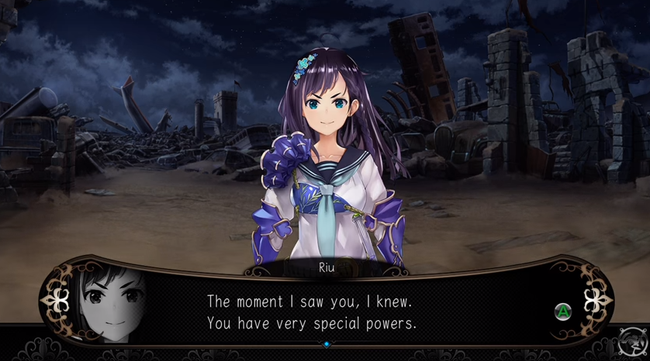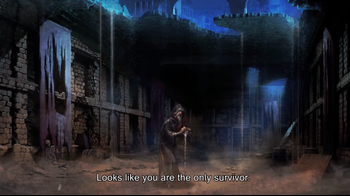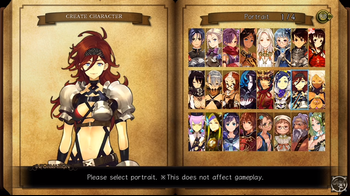Stranger of Sword City - Xbox One Review
In 2014, NIS America released Demon Gaze as the first localized title from Experience Inc, which gave an indication of what was to come from the dungeon crawler developer. In that same year, Japan saw the release of a similar title, Stranger of Sword City on Xbox 360. It seemed like a promising but largely under-the-radar game, perhaps due to its platform, until updated versions were announced for PlayStation Vita and later Xbox One. Now the west can finally experience the occasionally cumbersome, but mostly rewarding gameplay in Stranger of Sword City.
Sword City begins with a series of bizarre happenings around a plane crash. The accident lands you right in the center of this new realm, Escario, to partner with the Strangers Guild. There’s a great deal of turmoil facing Escario and its band of unlikely heroes, who are referred to as Strangers in this universe.The average become mighty, and those who once lived normally in the real world experience larger than life changes after finding themselves in this new setting. There are a few surprising revelations in the story, but the individual characters independent from the main tale are far more engaging than the story at large.
Upon your first encounter with one of the leading ladies in the Strangers Guild, Riu Tsukisada, it is apparent that the typical life the protagonist once experienced prior to the crash is over in exchange for something wildly unfamiliar. Riu explains that before her encounter with this realm, she was an average high school student who had no useful skills or talents in particular. In Escario, she is a warrior with surprising strength and abilities far beyond anything an average person could possess. This same concept applies to the character the player has created as well.

Thus leads to the point about Stranger of Sword City’s character creation options, something I was tremendously surprised with and spent far more time than planned in. The game strays from the typical instructions of character creation. There is no playing with sliders and swapping hair colors for hours, and the game is better for it. Stranger of Sword city favors a system of 31 premade avatars that have more personality than anything I’ve ever stumbled through with facial toggles and color wheels.
Continuing the creation process, age is another factor in your avatar’s profile. The older the character, the more they risk death. But this also comes with greater benefits, as level up bonuses increase for older characters. Younger characters feel a little more hardy, and their ability to sustain and recover HP. Tilting the game too far to either extreme can create notably different experiences.
The character creator has all of these features plus a few more for party members you create later on. Choosing between races determines different stat attributes, and different class choices can play to the strengths and weaknesses of particular class. Playing mix and match with these combinations and exploring talents was one of my favorite parts in Stranger of Sword City. There are more combinations than I can test in a single run of the game, thus adding to the fun of a few replays to try something entirely fresh.
Turn-based exchanges typical of the genre is how players experience combat, but with a few mechanics thrown in to steer slightly away from the typical. In Escario, you’re tasked with defeating bosses, or Lineages, to collect blood crystals and unlock powerful divinity abilities. These abilities are limited in use, but add for an element in play that was just enough more complexity from the typical turn-based experience to keep me satisfied and critical of my own moves. Stranger of Sword City often spikes in difficulty, so I carefully monitored my divinity in the corner, trying to conserve it for the perfect moment in battle in some of my more desperate encounters. Divinity, for me, was often used as a clutch move that swiftly turned a disaster into something that could be salvaged.
As much as there is to dote on in Stranger of Sword City, the game does hit some lows. Perhaps the biggest detriment to the dungeon crawler is character death, and even after the hours I have put into game, I’m unable to fully understand just how the revival system operates.
Once a party member’s HP hits zero, there’s the ability to recover their life via a fee or rest. The fee is absolutely out of the question for anyone a few hours in. Players will not be able to accumulate the funds needed in order to instantly recuperate a party member, and for anyone new to a title like this: you will lose a character early on in this system. It’s frustrating, because with a full team, the pacing of battles makes them a typical and rather enjoyable turn-based experience. Losing a member early on will leave you handicap for a while, unless you’ve been able to acquire more reserve members.
Early on, I kept losing one or two characters. The fee or rest system was so irritating that I found myself abusing the reset function of my console instead of resorting to either. That feels like an unacceptable alternative, and is reminiscent of my anger with early Fire Emblem games. Resting was almost always my only option until the very end, but the game’s concept of time felt like it was heavily reliant upon some sort of random factor. Ducking in and out of dungeons, I would constantly check on incapacitated party members to see if they had revived, making for a miserably cumbersome experience. I still have no clear idea of how Stranger of Sword City counts its days, and no longer care to try and figure it out. My advice going into this element is to bypass it altogether, players are better off resetting their console.
Stranger of Sword City’s falters again in the 3D textures of the environment. This isn’t a problem I found unique to this dungeon crawler in particular, but to the genre at large. The monotonous textures of every corridor were tiresome to look at for long sessions of play, Sword City does not improve upon a problem I’ve often had with similar titles. In fact, it only makes it worse, as some of the textures seemed so grainy or unfocused that they became a little painful to stare at. Trying to complete some tasks all in one go often threatened to leave me with a headache.

Poor environments are quite the shame, considering how fantastic the art is in this game. The Xbox One version has added an additional artist to the mix, and while I feel the style doesn’t fit the setting, the art is still incredible. The generic anime teenager feel of the new designs were not to my tastes, but thankfully this new version of the game allows for the switch between both styles. If you played Demon Gaze, then this new work by En Okishiji will be familiar. However, don’t neglect the original style, and my favorite, by Yoko Tsukamoto.
While my experiences with Demon Gaze are limited, I would still count for Stranger of Sword City as much of the same thing. This serves Sword City fine, as it improves upon its predecessor and differentiates just enough on its own to feel new and worth its time. While it has one glaring issue in particular, this isn’t enough to count it out of your library. Stranger of Sword City on Xbox One offers an experience to console owners mostly reserved for the 3DS and Vita now. Experience has the dungeon crawler formula down, and their gradual incline in quality is a promise of great potential for reinvigorating the genre.


